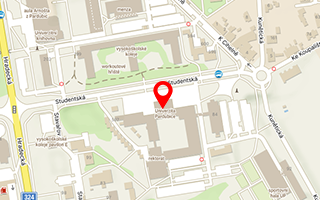Project No. TJ04000301 – Non-destructive Determination of Mechanical Stress in Continuous Welded Rail received support from the 4th call of the programme for the support of applied research ZETA TA CR.
Investigation commenced on 1st May 2020 and lasts until 30th April 2022.
Technology of continuous welded rail has been developed since the first half of the 20th century. In the continuous welded rail theory, it is assumed that neutral temperature (i. e. temperature, at which there is zero thermal stress in rail) corresponds to welding temperature. However, as soon as in the research of prof. Koc from Gdańsk University of Technology from the seventies of the 20th century and in many other researches, it is proved that the reality differs from this theoretical assumption and over the course of 1–2 years from final welding, neutral temperature can rise or drop by several degrees Celsius. This has been supported even by railway infrastructure managers.
Implications of this effect are very important. A change of neutral temperature by one degree Celsius results in a change of mechanical stress in rail by more than 2 MPa. Considering that the calculations being made for continuous welded rail according to the valid standards count with stress of more than 130 MPa only due to the thermal loading and additional stress sources, e. g. stress from railway operations, must be taken into account, even a small change or inaccurate knowledge of neutral temperature (and therefore the stress in rail) can eventually result in rail failures – rail break or track buckling.
All existing ways of determination of stress in continuous welded rail are either destructive (e. g. rail cut) or require time and technically demanding intervention into the railway superstructure, i. e. a costly railway track closure and many restrictions. Therefore, many research projects in Europe, Asia and the USA focused on research of non-destructive determination of stress measurement in continuous welded rail in the course of the past 40 years. However, none of these methodologies proved to be practically applicable and reliable for the use by railway infrastructure managers.
Within the scope of the project, we want to combine field experimental measurements and numerical analysis. The main planned measurements can be divided into the following three parts:
1. Measurement of rail stress distribution over time.
This is a very important measurement that aims on determination of neutral temperature development after final welding. Our intention within the scope of this measurement is to install series of strain gauges on selected railway line sections in order to investigate the continuous welded rail deformation over time. We are going to select suitable sections with Správa železnic, the Czech railway infrastructure manager, in such a way that they differ by specified parameters, ideally always by one, so that we can identify the impact of these parameters as precisely as possible.
2. Measurement of rail temperature change based on microclimatic parameters of a railway line section.
Purpose of this measurement is in determination of temperature gradient on rails between two close stationings with a distinct microclimate. Temperature gradient (similarly to stress gradient) can occur in rails periodically daily (night/day) and yearly (winter/summer). If median values within these cycles vary, it can lead to rail deformations as rail mass moves in the direction of the equilibrium.
3. Measurement of movement of rail profile.
Purpose of this measurement resides in identification of possible permanent deformations emerging from rail movements in locations of tangential forces with predominantly one-sided orientation. This parameter can play a significant role especially in the period shortly after final welding if neutral temperature rises on one side and drops on the other side of the location heavily loaded by the tangential forces.
4. Numerical analysis.
Purpose of the numerical analysis is to create a model of rail with parameters of outer effects that will be calibrated by measured values of particular parameters and will serve for prediction of further combination of stress states in rail. With help of such a model, we will be able to extend the analysis by other situations that would otherwise require auxiliary measurements or we will be able to use it for verification of those measurements.
Except for above presented activities, we will deal with other complementary measurements and analyses, whose need arises within the project investigation.
Our motivation for the project investigation was mostly the opportunity to inspect the problems of continuous welded rail. Continuous welded rail is extensively used all over the world and it is used more and more in these years. It has many advantages, but some problems have not been successfully solved, yet. Moreover, in consideration of the worldwide scope of use of continuous welded rail, every improvement in this area can be considered as an appreciable asset.
Our further motivation resides in development of research potential in the departments of the respective research team members, engagement of students in research and increase of their research competence.
Major deliverable of the project is creation of methodology that enables determination of stress in continuous welded rail by non-destructive means, i. e. based on parameters that have some influence on the stress in rails and that can be obtained by non-destructive means, too. We want to reach this by a combination of three field measurements and creation of a computer model for numerical analysis. We want to transfer knowledge gained within the research and summarized in this methodology to railway infrastructure managers and increase the economy and efficacy of railway structures in such a way.
Other deliverables of the project are creation of functional sample of measuring set for diagnostics of time development of deformations of continuous welded rail, which will be used for one of the planned measurements, and deepening of knowledge about continuous welded rail behaviour under various outer conditions.
You can read more about the project in TA CR STARFOS and in IS VaVaI.

